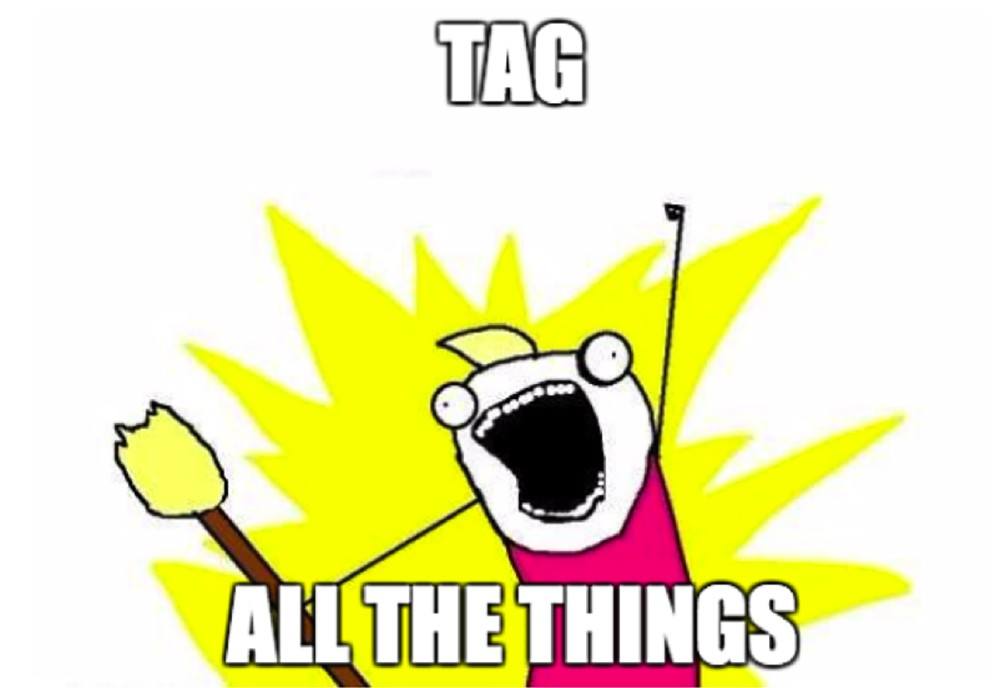Google Tag Manager is a user-friendly solution for tag management, allowing marketers to send data to a variety of platforms and parties without the need for development experience. But even with all the options at their disposal, most marketers aren’t using GTM to its full potential.
In this article, we’ll touch on a few things to keep in mind as you’re tagging to ensure you’re tagging smarter and not making things harder on yourself.
The Good (Do This)
Structured environment
If you’re reading this, you probably already know that GTM is made up of accounts, containers, and tags; you probably also know that it’s best practice to use a single account per company and a single container tag per site. But still to this day, I continue to see many websites with multiple GTM accounts for one company or several container tags just for one website—all because two different divisions, departments, or even just two people on the same team didn’t take time to think.
Multiple GTM accounts or containers will cause tracking and diagnosis issues sooner or later, and it only becomes a bigger nightmare as your account grows. Take my word for it (or Google’s, they’re smarter than me)—use only one GTM account per company and only one container tag per website.
What’s in a name?
Tagging can be complicated, depending on how granular you want to be. That’s why naming conventions are critical.
Tag management within GTM becomes messy if you don’t use good naming conventions from the very start. Pretty soon your team is creating duplicate tags because they didn’t know one already existed. Or they’re so vague as to be useless, like:
- “Analytics tag”: Is that Adobe Analytics? Google Analytics?
- “Brochure Download”: Which brochure? Where?
- “Demo”: For which product?
Those are all real tags I’ve come across in GTM containers, and it frustrates me to no end. Why not make it easy on yourself and be as descriptive as possible?
Measure twice, cut once
Marketers are usually confident people, which is often an advantage, but overconfidence breeds poor execution. Testing your tags and triggers prior to publishing is the easiest way to ensure you’re tracking the events you planned on.
I can’t count how many times I’ve seen marketers (myself included) publish their untested tags and triggers, make decisions based on those events, and then find out that they weren’t even tracking what they thought they were. Like any good carpenter would tell you, measure twice, cut once.
The Bad (Don’t Do This)
Anytime you’re learning something new, there are inevitably going to be mistakes. Here are the things you absolutely have to avoid when you’re beefing up your tagging.
Providing unrestricted access
Most organizations are made up of many stakeholders interested in a variety of insights, ranging from sales to analytics to marketing and beyond. And if tags aren’t managed properly, that’s a recipe for tagging chaos.
In my experience, unfettered GTM access is not common, but it does happen. For example, consider a large retailer that sells products not only on its own website, but also on third-party domains. The retailer wants access to the GTM containers for all third parties carrying their product; if the retailer adds or revises tags and triggers and publishes the container without oversight, this can cause serious reporting issues for the third party.
Long story short, it’s wise to only provide full access to a select group of users who are in alignment regarding the end goal of your marketing strategy.
Double tagging
This is one of the most common issues I see with tag deployment. If you have deployed tags via Google Tag Manager then you should remove the corresponding hard-coded tags from your website as soon as possible. Failing to do so may result in inflation of your analytics data, which will skew the insights that you derive from marketing performance.
Tagging without purpose
Why are you tagging what you’re tagging? Is it to better understand how your customers engage with your website and the content found within? Or is it just for show?
Most marketers would say “we’re tagging so we can get better insights,” but most wouldn’t know what to do with that data even if they had it. Is it really valuable for you to know at what point a customer paused the video you posted on a blog post from three years ago? Or how far they scrolled on a page where 90% of the content is above the fold?
Defining SMART goals prior to tagging is essential to success, otherwise you’re going to be tracking a bunch of junk data that’s useful to no one. Tag with purpose.
The Ugly (Definitely Don’t Do This)
You may be wondering what exactly I mean by “the ugly.” What I mean is that some tagging faux pas simply can’t be chalked up to inexperience, but require willful ignorance—those containers can only be described as ugly. These next few examples are the tagging equivalent of ordering a well-done steak with extra ketchup.
Manually tagging every event
I recently spoke to a marketing manager about Google Tag Manager and he went on at length about how well he had tagged his website. I had a chance to review his GTM container and found that he had manually tagged each and every event he wanted to record on his website. Rather than using the variables at his disposal (e.g. {{Click Text}}, {{Page URL}}, etc.), he chose to create a separate tag and trigger for each and every event he was interested in tracking. All told, it added up to well over 100 separate tags and triggers, even though many of them were tracking the same types of events with minor variations. After about five minutes in the account, I was able to consolidate them to a single tag and trigger combination.
There was once a time when marketers had to manually hard-code event tracking on their website, but that time has long since passed. Tools like Google Tag Manager are here to make our jobs easier, so why use 2007 practices to accomplish a 2017 goal?
Tagging everything
Analysis paralysis is something even the most experienced marketers struggle with and with all the data at our disposal these days, it’s easy to understand why. So when I see marketers tracking everything they possibly can, it gives me a mild panic attack.
In most cases, the offending marketers recently learned about tagging and saw it as a cure to all their reporting woes. “We’ll tag everything and then we’ll know everything!” they proudly proclaim, all the while getting buried more and more by the data they already have.
While proper tagging can provide a wealth of information from which we can derive insights and develop informed strategy, over-tagging can often provide misleading results. What good is tagging every link on your website if your reporting platform already provides that data natively? Worse yet, if those click events are then tracked as a conversion goal, it may lead you to make decisions based on faulty logic.
Realize Your Potential
Google Tag Manager is a great tool that every marketer should use. By customizing your tagging setup and optimizing for best practices, companies can gain amazing insight and drive tremendous value. All websites are different, though, so be sure to customize Google Tag Manager for what makes the most sense for your company.








